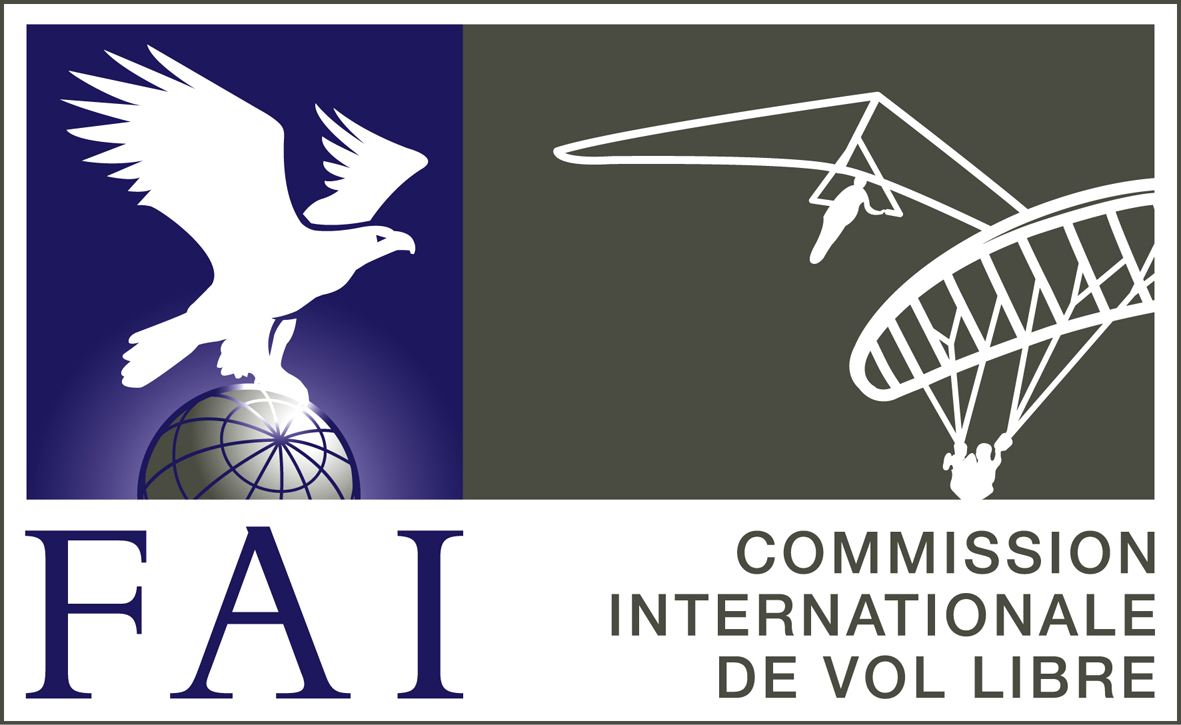
FAI Hang Gliding and Paragliding Commission (CIVL)
Paragliding Cross Country (XC)
Paragliders take us into a world driven not by the laws of man, but by the laws of nature. They have evolved significantly since their early parachuting days back in 1985. Early gliders had a glide ratio of around 4:1 and an extremely narrow speed range. Today's 'hot ships' have a glide ratio of better than 10:1 and optimum speed may exceed 65kph. This improvement has been brought about by a continual process of experimentation, lateral thinking and inspiration on the part of the designers.
Currently, there are two methods of competing in Paragliding XC - to fly a further distance (Open distance) and to fly the first to finish (Race to goal). When flying Open distance sometimes pilots are given the directions which to follow (for example - West or North-West). When competing in Race to goal the pilots are supposed to follow a defined route. They should begin from launch ground (Take off) pass Start (Start cylinder), then fly all the way through specified control points (turnpoints), the last but one of which serving as the stopwatch line (End of speed section) and come to finish (goal). They also receive a number of bonuses for being in front (leading) or being high (altitude) or penalties (e.g. for entering forbidden zones) so the first pilots lading on the goal is not necessarily the one who will be declared the winner of the task.
The first-ever Paragliding World Championship was held in Koessen (Austria) in 1989, unfortunately, the results were not valid, so the first podium was made in 1991 in Digne (France). See PG champions page to learn the latest winners. European Championships are held since 1988 St Hilliare (France), Pan-American since 2008 Castelo (Brazil), Asian since 2004 in Handong (Korea).
The Wolrd championships are held once in 2 years with continentals in between.
FAI Commission that takes care of Paragliding XC competitions is CIVL (Commission Internationale de Vol Libre) Hang gliding and Paragliding commission of CIVL.
Potential organizers usually apply to CIVL with their bid 3-4 years in advance. The detailed procedure of how to host FAI Category 1 event is described in the relevant section of the CIVL website.
Since organizing FAI 1 event is a serious enterprise many local organizers start with smaller FAI category 2 events. Having international recognition and CIVL support and promotion they give pilots a lot of benefits to train for the main championships and earn WPRS points.
The organizer of FAI category 2 event can apply as late as 40 days before the event to get the sanction. Please study Cat 2 application procedure here.
Begin with registering on the CIVL Application management system - https://ams.fai.org/
All pilots taking part in CIVL competitions (both cat 1 and 2) get CIVL World pilots ranking. Regulated by a special document - Section 7 E (WPRS) of FAI Sporting Code.
The ranking can be viewed on the website http://civlrankings.fai.org
The earned points devaluate completely after 3 years, so pilots that do not regularly take part in the competitions have no chance to get up in the ranking.
Competitions mainly are scored by GAP formula (link) and FS scoring software.
Recently CIVL has started research aimed to allow other software and formulas to be used.
Since Paragliding XC tasks occupy huge spaces like 30-100 km it is impossible to view racing competitor in another way than by means of live tracking, which also adds greatly for pilots safety.
Live tracking is currently provided by means of the following web-services:
Some of them also provide the possibility to arrange competitions website.
In category 2 events the organization of live tracking and the choice of the provider is completely upon the decision of the organizers. CIVL does not regulate or recommend any service or method.
In Category 1 events, on the contrary, live-tracking is obligatory. CIVL provides the organizers with an approved live-tracking fleet and the staff to control its functionality.
Category 2 event organizers are supposed to have website and publish the local regulations before they apply for FAI 2 status.
All competition organizers are supposed to have the results daily published on websites.
All competition organizers can contact CIVL to get free PR support for their activity.













